Genoa, 10 unusual places off the beaten path of mass tourism
“With that face a little bit like that, with that expression a little bit like that that we have before we go to Genoa...”: so sang Bruno Lauzi (or Paolo Conte, depending on which version you prefer) in that habanera tango with the overwhelming rhythm of Genoa for us giving the essence of the intrinsic relationship of the Genoese with the sea. A people of sailors, the small fisherman or the deckhand of a ship, but also the magnificence and splendor of the Republic, a sign of a civilization that had already progressed in the political events of History, which with Doges, noble and military class, science and technology made the city grow artistically and culturally as well. Pragmatists, detail-oriented but also dreamers and enterprising (one name above all: Christopher Columbus) made Genoa a crossroads for merchants and artists seeking patrons to experiment and express themselves. Seven centuries of history that have defined Genoa as synonymous with supremacy on the seas: the Superb, the Dominant Genoa, as Petrarch called it, with the largest port in Italy and among the largest in the Mediterranean contributed to the city’s wealth and development.
An urban development conquered span after span on that strip of coastline, which then rises to over a thousand meters steeply of Mount Reixa, whose historic center is enclosed by the seventeenth-century walls, the Genoa of the Ducal Palace, the Lantern, the Royal Palace, the Museums and Villas, the cathedral of San Lorenzo and the sumptuous interior of the Basilica of the Santissima Annunziata del Vastato, the new streets and the Palazzi dei Rolli, which cover the focal point in which the city’s greatness was shown. A World Heritage Site since 2006, they are the list of the Palazzi in which foreign dignitaries on state visits at the turn of the 16th and 17th centuries chose to stay. Streets and aristocratic palaces of three or four stories monumental staircases, courtyards and loggias overlooking gardens built between the Renaissance and Baroque periods, praised by Rubens, to represent the splendor of the Republic of Genoa when it was at the height of its military, commercial and economic splendor and power, thus excelling also from an artistic point of view. Genoa is full of splendid places even off the classic circuits of tourism, and it is full of gems that are often found inside totally unexpected places. Let’s look at ten of them.
1. The Chamber of Commerce (Palazzo Tobia Pallavicino).
In the group of the 42 Palazzi dei Rolli included in the Unesco site, which initiate modern urban architecture, there is Palazzo Tobia Pallavicino, which currently houses the offices of the Chamber of Commerce, but it is worth entering even if you do not need to do a chamber of commerce visura for your business. We are on Via Garibaldi, and the construction took a few years around 1560 at the behest of Marquis Tobia Pallavicino, who entrusted the Bergamasque architect, plasterer and decorator Giovanbattista Castello with the direction. The building was built on two floors of cubic proportions, with a garden at the back, but after 150 years it was enlarged by the new owner Giacomo Filippo Carrega into the structure that remains as it is today: the facade was modified in its decoration and in the insertion of balconies on the second floor, it was raised by an additional floor, and the garden became an inner courtyard being surrounded on the sides by new wings of the palace. Already from the three-arched atrium the innovative force of the artistic solution emerges: the monumental staircase in front of us with double ramps actually has a fake one and only one leads to the second floor. Frescoes, stuccoes, statues, chandeliers, and mirrors crowd the rich interior decorative set-up, the highlight of which is the Galleria Dorata by Lorenzo De Ferrari (designer, painter, and decorator), the highest expression of Genoese Rococo. Completed in 1744 it became the palace’s new place of representation and represents the summa of this artist’s decorative conception, with a variegated and rich polychromy made of gold, stucco ornaments in relief that thanks to games with lights and mirrors generates altered dimensional perception. Not to be missed in the Chapel on the main floor with the cast of Pierre Puget’s famous Virgin.
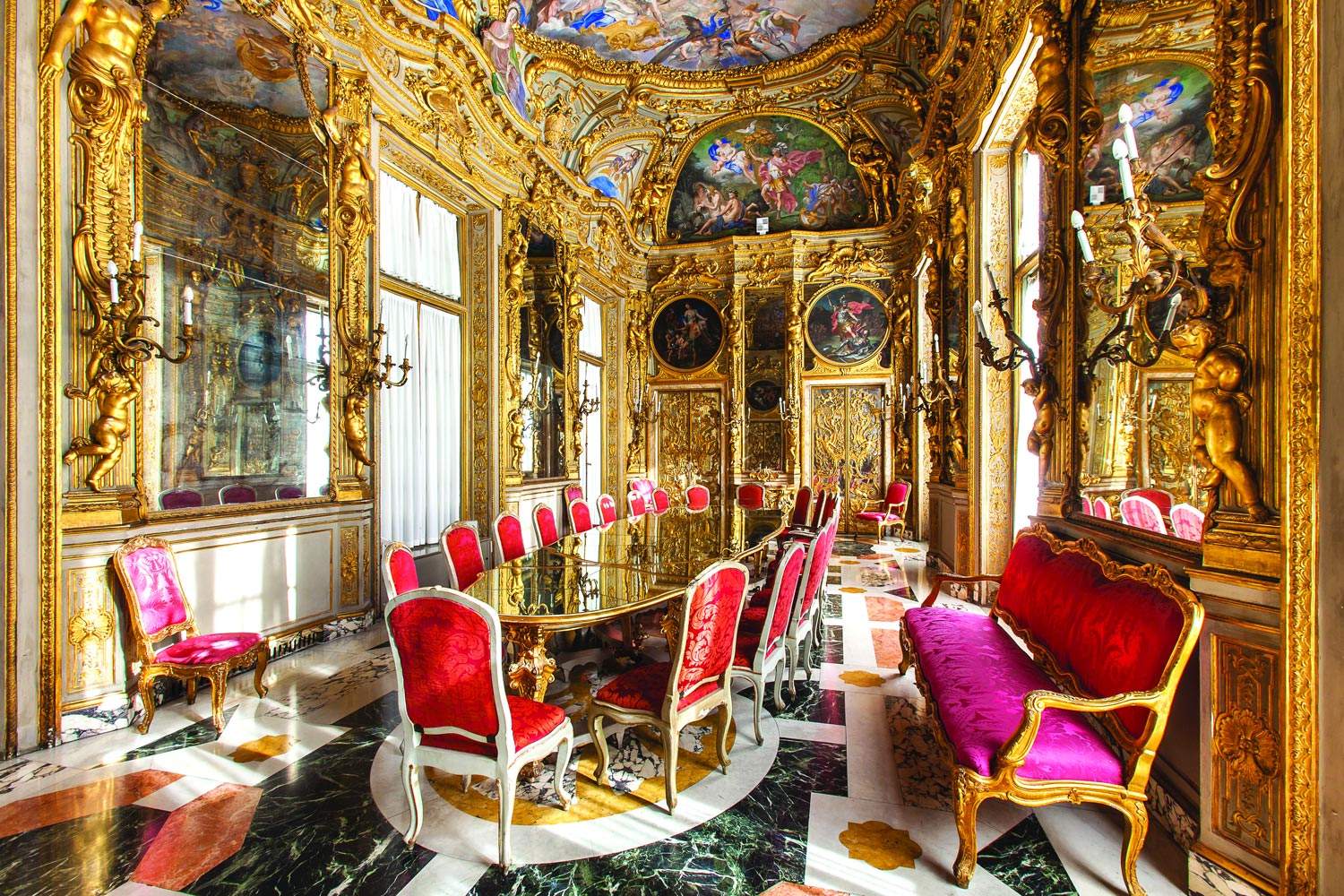
2. The church of San Matteo
The church of San Matteo and the square of the same name are the heart of the Doria district. Founded as an aristocratic church in 1125 at the behest of Martino Doria, a Benedictine monk, in Romanesque style it took on the characteristics of Gothic with interventions 150 years later. Initially the square did not exist; the space was occupied by the church itself, which was later set back to form the quadrangular square overlooked by the family’s palaces with all the distinctive artistic features (colors, materials, Gothic forms, ogival arches...): the Palazzo Branca Doria, adjacent to which is a quandrangular cloister with pointed arches on coupled columns (from 1318) accessed from the left side of the church, Palazzo Lamba Doria, Palazzo Domenicaccio Doria, Palazzo Giorgio Doria. the best-preserved medieval corner in Genoa. The facade of St. Matthew’s is characterized by the horizontal alternation of bands black Promontory stone and white marble where stories of the exaltation of the Family were engraved. In the center is a large rose window and at the sides of large single-lancet windows. Above the entrance portal is the beautiful mosaic depicting the Holy gabelliere, hence the affinity with the Dorias. In the mid-sixteenth century a new renovation in the Renaissance style by Montorsoli: his are the fine decorations of the presbytery, dome and crypt where Andrea Doria is buried, and Giovanni Battista Castello (Il Bergamasco). The interior is divided into three naves, and Andrea Doria’s sword given to him by Pope Paul III is kept under the altar. Frescoes, canvases, and stuccoes enrich its decoration: the Miracle of the Dragon of Ethiopia by Luca Cambiaso; the Vocation of St. Matthew by Il Bergamasco; the Holy Family with St. Anne by Bernardo Castello; Christ among the Saints and Donors by Andrea Semino; a polychrome wooden sculpture by Anton Maria Maragliano depicting the Deposition of Jesus in the Tomb
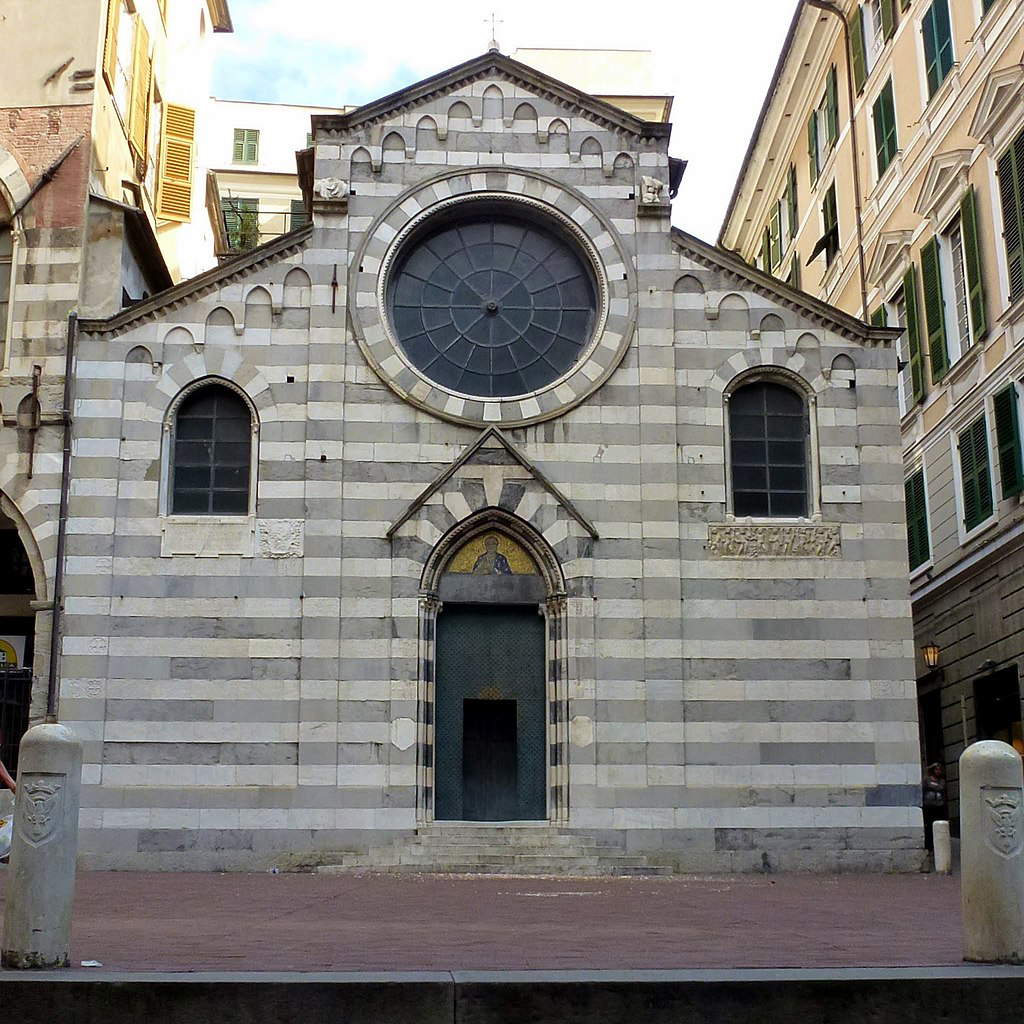
3. The Museum of St. Augustine
The Museum of St. Augustine is Genoa’s “Museum of Ligurian Architecture and Sculpture,” and is located within the complex of the former convent of the Hermit Friars of St. Augustine (from the 12th century), whose adjoining church is deconsecrated and serves as an auditorium. The structure is notable for the peculiarity of the double cloisters, one of which is triangular in shape, and the bell tower with the use of bricks and polychrome tile covering. The museum, on the other hand, was created and realized by collecting sculptures, detached frescoes, stone artifacts, panel paintings, and ceramics (including a collection of Spanish azulejos) mostly from other religious buildings that over time have decommissioned their function, becoming a place in which to flow through the different eras theGenoese artistic evolution from the early Middle Ages to the modern age Works by Schiaffino, Castello, Piola, Cambiaso, Parodi, Giovanni Pisano are preserved (one of his masterpieces is found there: Margaret of Brabant’s funeral monument) and Pierre Puget.
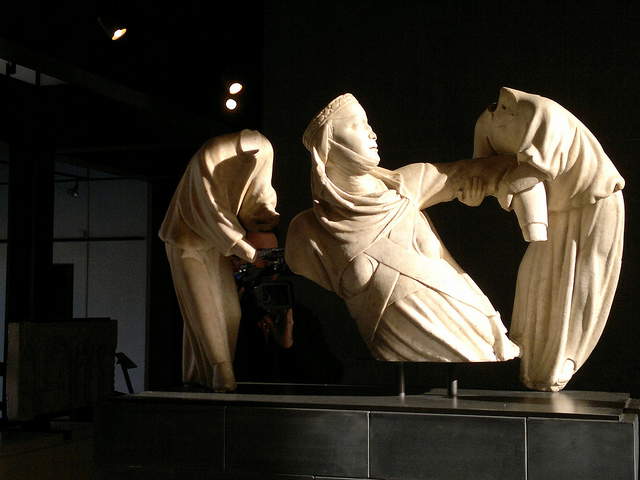
4. Santa Maria di Castello
The Church of Santa Maria di Castello is one of the symbolic places in the city’s history also for having been that of the first settlement of the future Genoa, and the copiousness of invaluable works of art housed inside, which as in a track through time follow one another with the evolution of artistic styles side by side, makes it a must-visit place. The church, with its Romanesque-style facade and Renaissance dome, has seen substantial changes since the passage to the Dominicans in the mid-1400s, who had the convent (which now houses the Museum), three cloisters and a convent garden built. Upon entering we have the space divided into three naves with five chapels on each side where, however, only those on the left are actually developed in depth: those on the right in fact, bordering the cloister, for lack of space behind have only the altar. The ten chapels are from different eras and were the landmarks used by families to exalt their importance before the construction of the Palazzi dei Rolli served this purpose. The five chapels on the left are open on the sides between one and the other, and the view is projected onto the wall where an incredible 15th-century marble canopy frames Giovanni Mazzone’s polyptych of the Annunciation: an exceptional work with brilliant colors and rich detail associated with the shading of the background landscapes. A quest for beauty that anticipates the Renaissance. In the loggia of the second cloister, the theme of the Annunciation returns with a late Gothic floral masterpiece by Giusto da Ravensburg from 1451. One cannot fail to mention the 13th-century wooden Moorish Christ, with the peculiar counterpoint to the classical iconography of Jesus: he is in fact without beard or hair. In the museum is Ludovico Brea’s 1513 All Saints Altarpiece, one of the symbols of Genoa. It is the coronation of the Madonna with all around 215 figures of saints and ordinary people described in minute detail, in adoration filling all available space with their eyes converging on the shimmering golden Virgin Mary. Christian tradition has it that here in 1576 Giordano Bruno left the tail of the donkey that carried Christ from the Mount of Olives to Jerusalem, preserved as a relic.
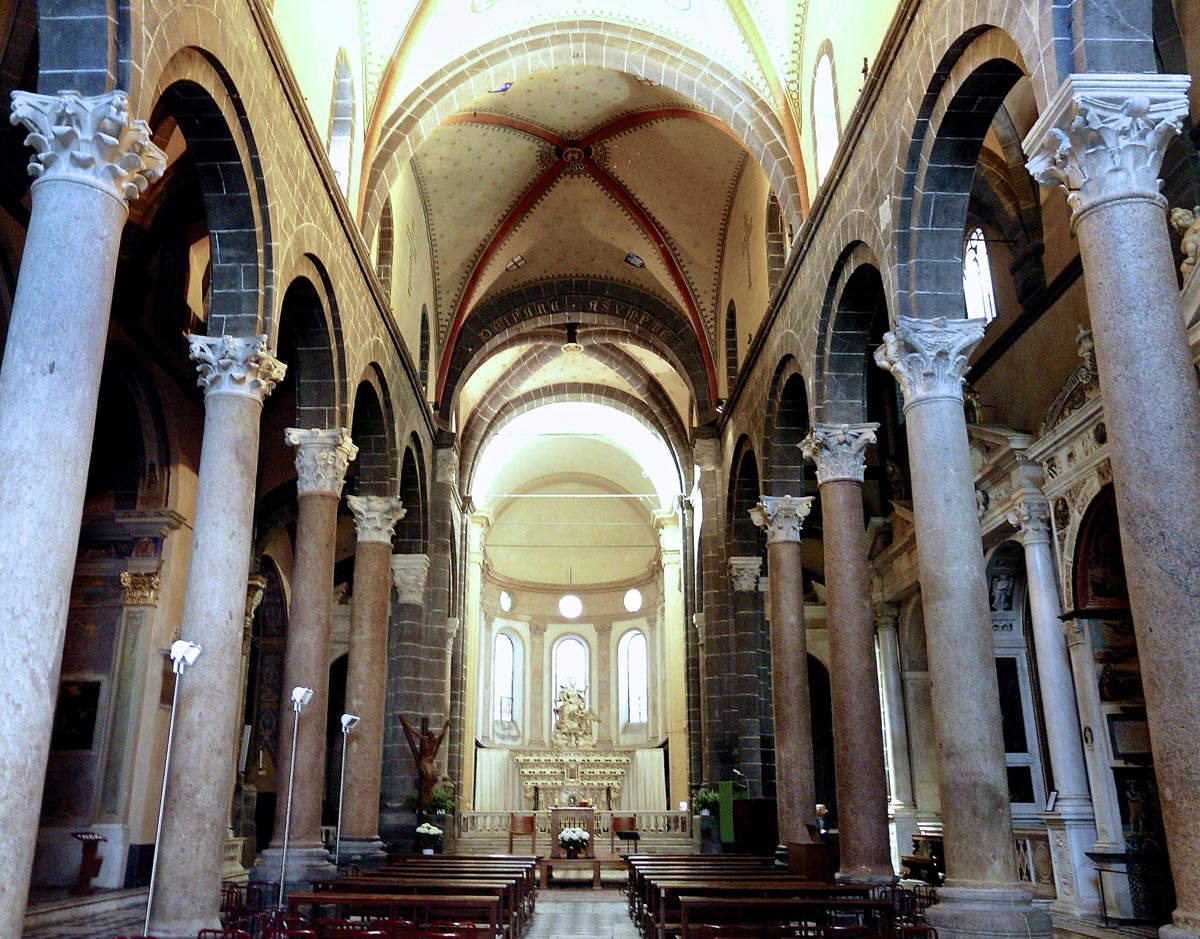
5. Villa delle Peschiere
The wealthy Tobia Pallavicini before the Palazzo dei Rolli had a villa built outside the walls, on a hill overlooking the sea, for leisure and recreation, and again the refinement and artistic-architectural solutions are of the highest level having to demonstrate the power of the family. And it is still one of the symbolic places of Genoa. The project is attributed to the Perugian architect Galeazzo Alessi and the name is due to the large fish tanks used to decorate the large garden surrounding the villa (once much larger), which is spread over two levels connected by two monumental pincer staircases in white marble that descend symmetrically from the center to the sides following the natural slope of the hill of San Bartolomeo degli Armeni on which the villa is settled. The two terraces are on a sea view. Here there is a unique place: an artificial cave with nymphaeum furnished with statues of sea gods, stalactites and mosaics made with the combination of many different materials. From shells to glazed majolica tiles, from corals to colored limestone to stucco decorations. The structure of the building, rigorous in its volumes, is u-shaped whose interiors were entrusted for the plastic and pictorial decorations to Il Bergamasco, who with a cycle of frescoes on the stories of Ulysses and the skilful use of painting to structure the architectural spaces on the walls in perspective makes the main hall on the piano nobile a princely place of great dimensions.
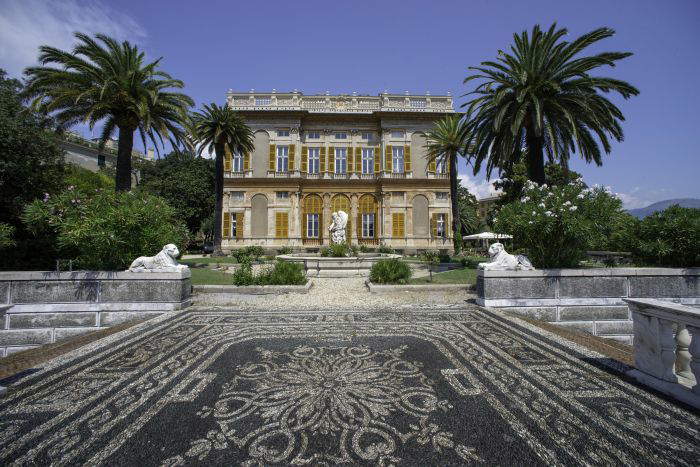
6. Staglieno Cemetery
Staglieno Cemetery is among the largest and most important monumental cemeteries in Europe and because of its extension of more than 330 thousand square meters and hundreds of chapels, mausoleums, statues and ornaments, it is considered an open-air museum so much so that Ernest Hemingway called it one of the wonders of the world and writer Mark Twain appreciated it more than the Rolli: “...The last visit was to the Cemetery, and which I shall continue to remember when I have forgotten the palaces.” Opened on January 2, 1851, it was designed by architect Carlo Barabino (also the author of the Carlo Felice Theater and Palazzo dell’Accademia), who dying prematurely did not complete the work, leaving it to Giovanni Battista Resasco. The layout is neoclassical in style, and among monumental staircases, Doric columns, a mammoth Pantheon, and chapels in Gothic, Byzantine, and Art Nouveau styles, one can retrace the history of art with Genoese artists who took turns in the various realizations for famous people such as Giuseppe Mazzini and the Thousand, and where it is possible to take thematic itineraries. In the middle of the driveway leading to the Pantheon steps is the monumental Statue of Faith.
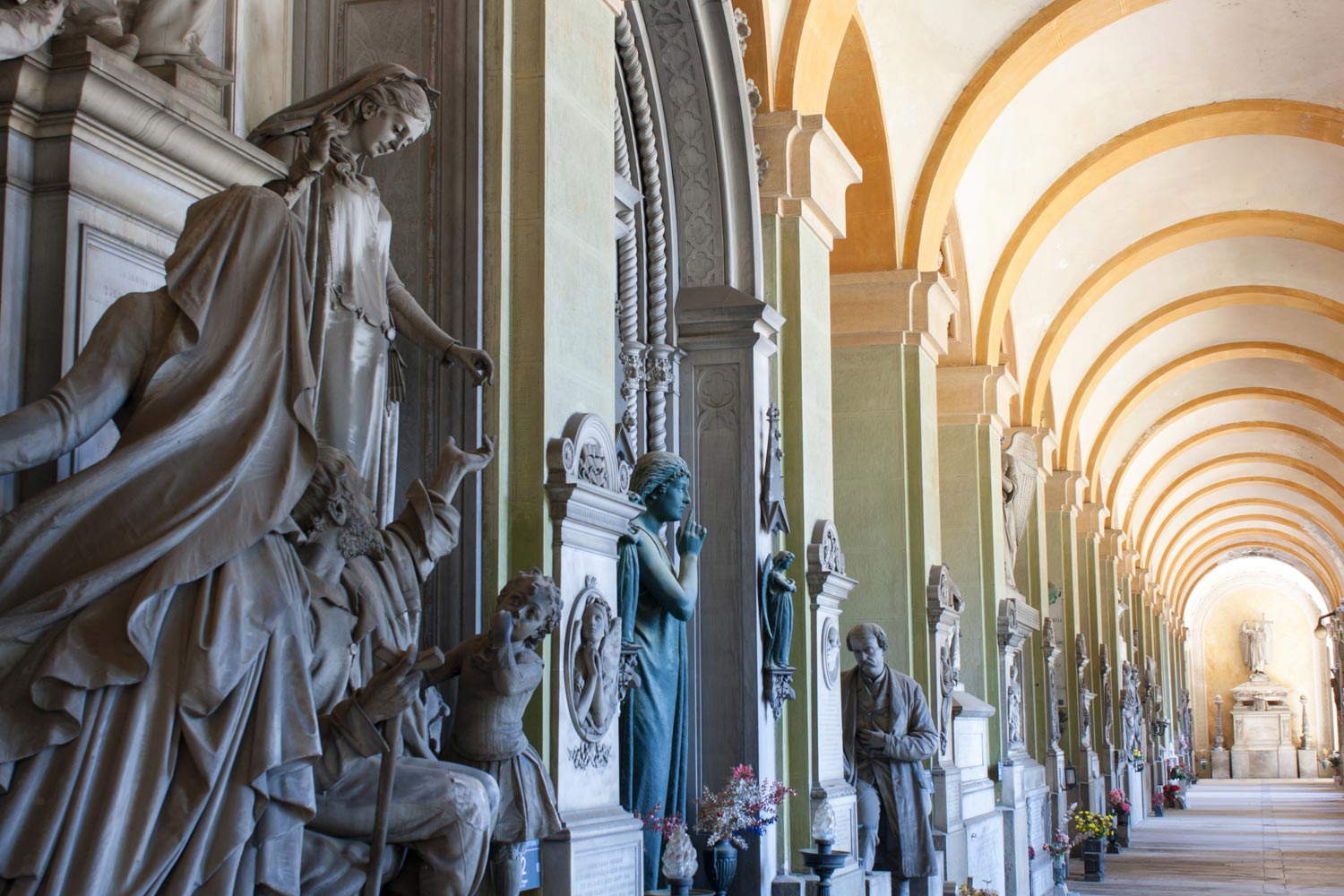
7. The Embriaci Tower
In the ddi Castello neighborhood, one of the oldest and most characteristic in Genoa, made up of houses and narrow streets, small squares, climbs and descents, next to the church stands an identifying symbol of the neighborhood: the Embriaci Tower. The name refers to William Embriaci who conquered, along with Primo’s fleet, Jerusalem in 1099 during the First Crusade. The spoils, upon his return home, contributed to the construction of the cathedral. Precisely because of its historical importance, the Embriaci Tower is the only one that was not curtailed after the city regulation of 1296 put a limit on the construction of towers that had become the parameter of power of medieval families: the higher it was, the more power it was intended to express.
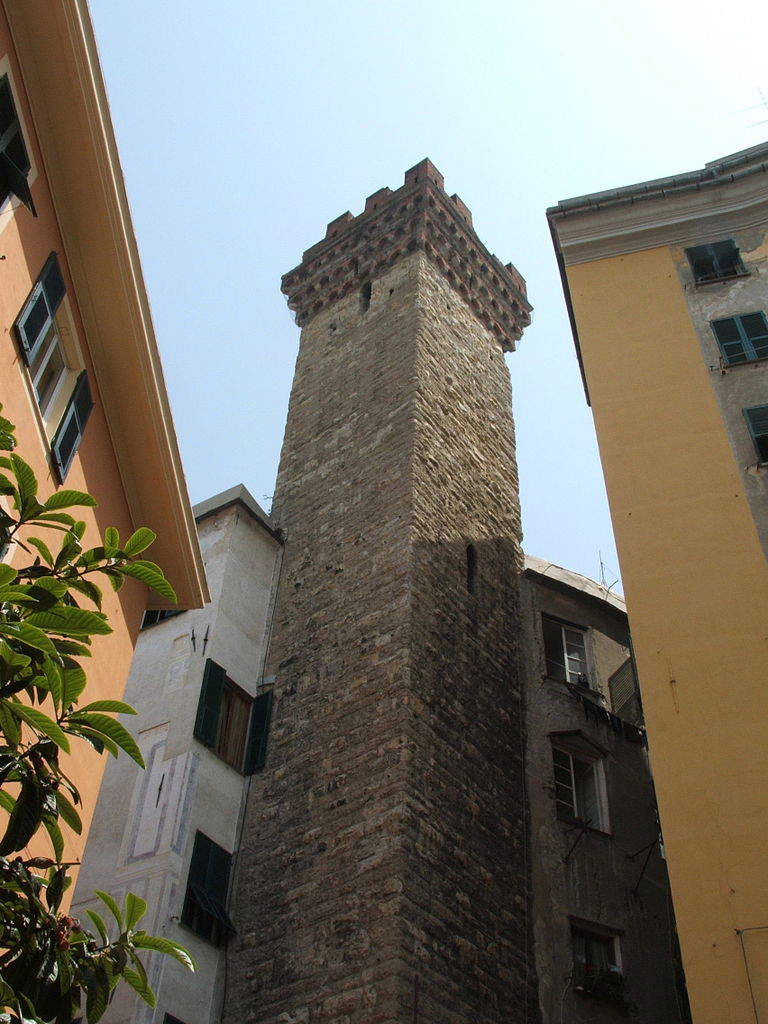
8. The D’Albertis Castle.
His love of the sea and the discovery of distant lands caused Captain Enrico Alberto D’Albertis to accumulate relics, knick-knacks, jewelry, musical instruments, tools, weapons, archaeological, ethnographic, seafaring materials, sacred and everyday objects of the peoples he encountered in a lifetime at the helm of a ship between the 19th and 20th centuries. And so in 1932 he donated all these treasures of his and the particular house where he lived to the city of Genoa, and today it is the Museum of Cultures. The home is basically a castle that the captain had built on the remains of ancient fourteenth-century fortifications later reinforced in the sixteenth century, but with a neo-Gothic style influenced by various exotic and colonial fascinations that the Africa, the Middle East and the Americas of his travels had left in his body and mind. Entering the castle is a journey through the eyes of a sailor who, when there was no Internet or television, came across strange peoples on foreign lands experiencing them for the first time. Today for all of us even if we went to Turkey or Colombia for the first time, it would still be like ’already seen,’ made up of reminiscences from school and heard on television. Those, on the other hand, were discoveries for real. And so we find the rooms furnished to you in a path that goes from the Columbian Room to the Gothic Room, or from the Turkish Drawing Room with its somewhat Arabian sail ceiling, to the Nautical Cabin built inside the sixteenth-century bastion, or the azulejos-covered study, to the library containing the more than one thousand books of Capt.
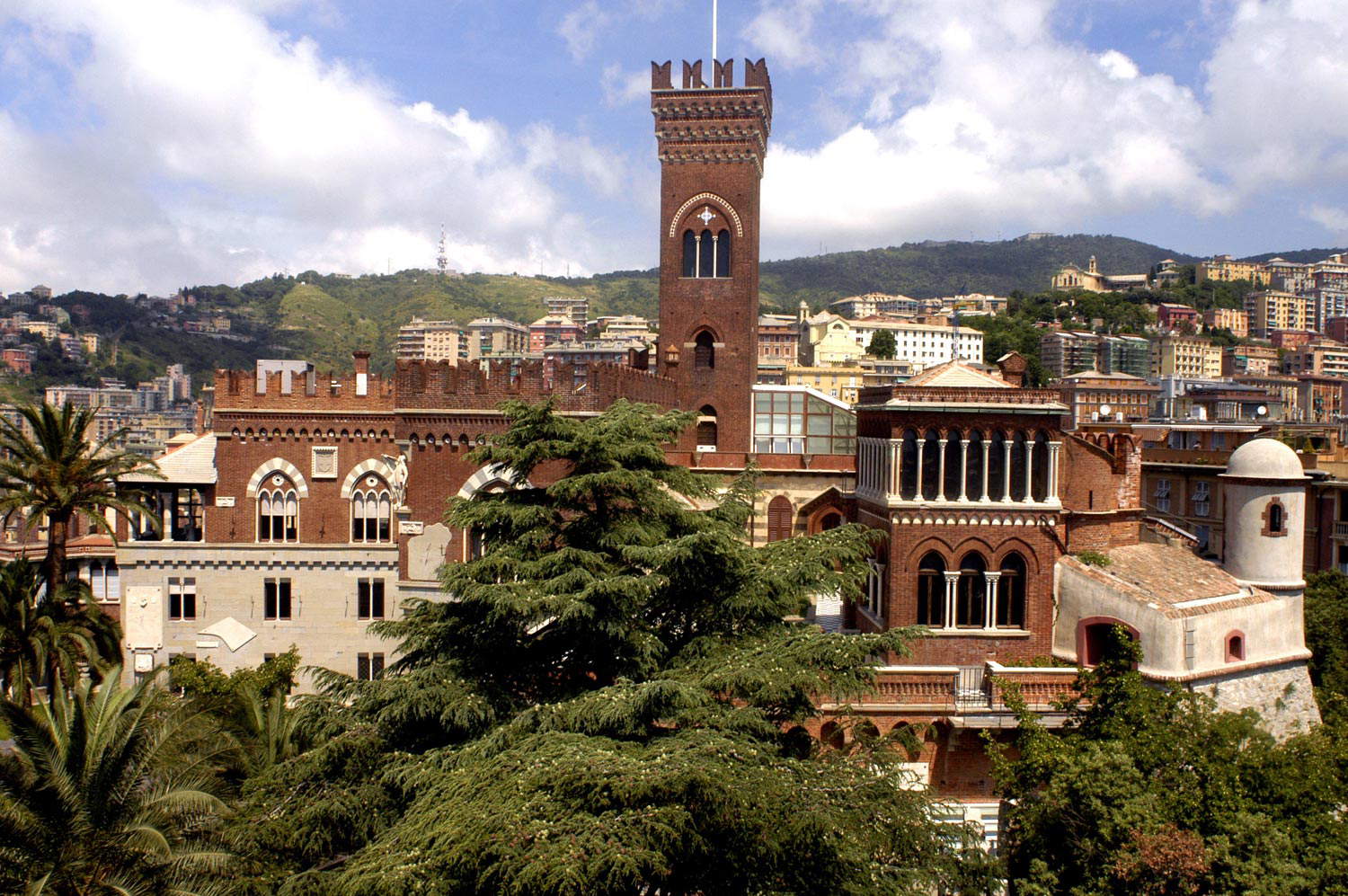
9. Interiano Pallavicino Palace
Palazzo Interniano Pallavicino is one of the Rolli, and a real gem. Changed hands several times, it was built in a few years between 1565 and 1567 by architect Francesco Casella for Niccolò (who was to be Governor of the Republic of Genoa) and Battista Interniano, and in the late 1600s the Vivaldi Pasqua family enlarged and modified it considerably. Numerous fresco cycles inside and on the facade are by the Calvi family. In the back is the distinctive terraced garden with a nymphaeum. As of 2019, it is also home to the Interiano Pallavicino Foundation.
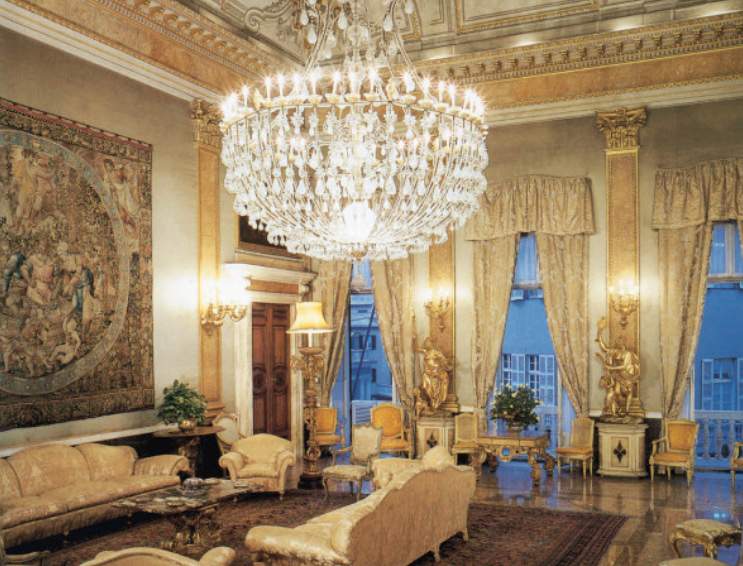
10. The church of San Luca
The small parish church of San Luca is a beautiful and articulated Genoese Baroque church that was part of the typical aristocratic and economically wealthy parishes that were available to the great aristocratic and wealthy families of the city. Here we are talking about the Spinola family, which had received the church in jus patronage from Pope Innocent VIII in 1485. The cruciform, single-nave church holds a painting that is the masterpiece of Grechetto (Giovanni Benedetto Castiglione), depicting the Nativity and the adoration of the baby boy by the shepherds; and on the high altar stands out Filippo Parodi’s late 17th-century marble group “The Immaculate with Angels.” Also of note is Filippo Parodi’s wooden work “Christ Deposed” painted by Piola. The decorations of the church are by Domenico Piola and Anton Maria Heffner a great expert in trompe l’oeil.

 |
| Genoa, 10 unusual places off the beaten path of mass tourism |
Warning: the translation into English of the original Italian article was created using automatic tools. We undertake to review all articles, but we do not guarantee the total absence of inaccuracies in the translation due to the program. You can find the original by clicking on the ITA button. If you find any mistake,please contact us.



























